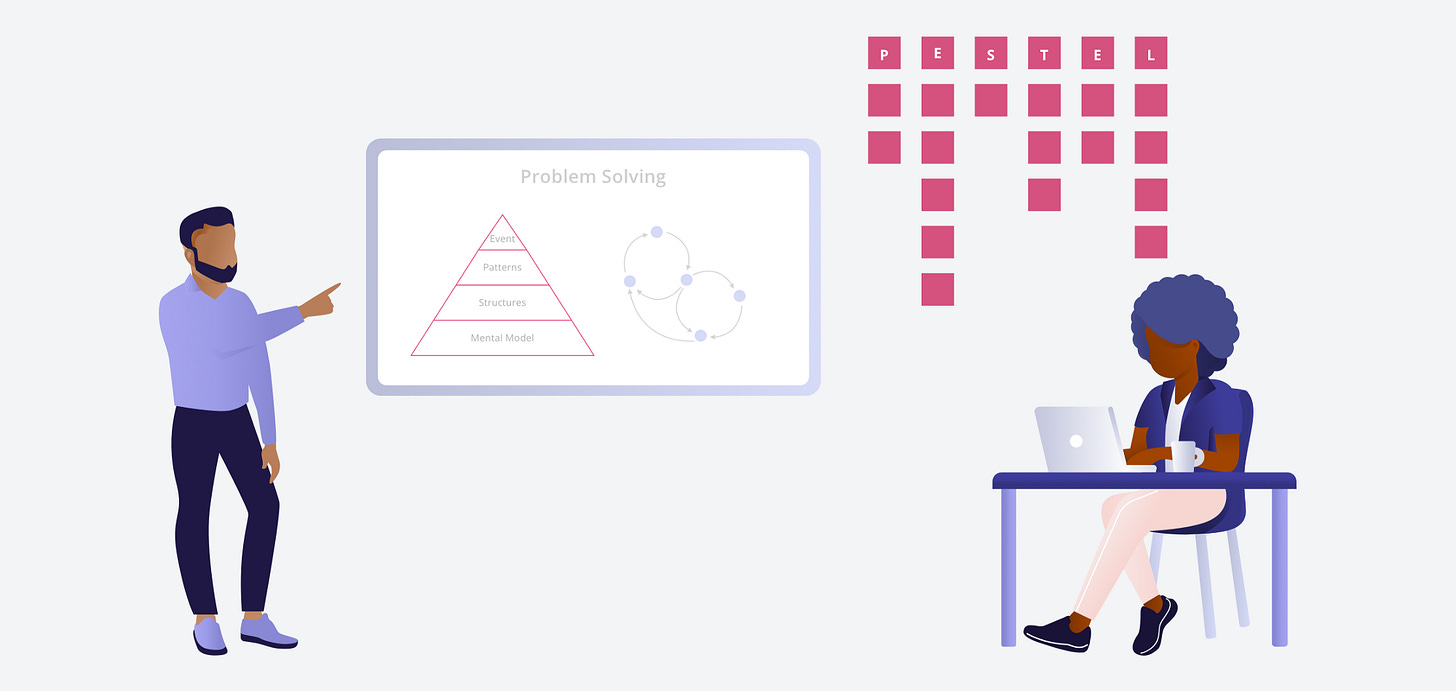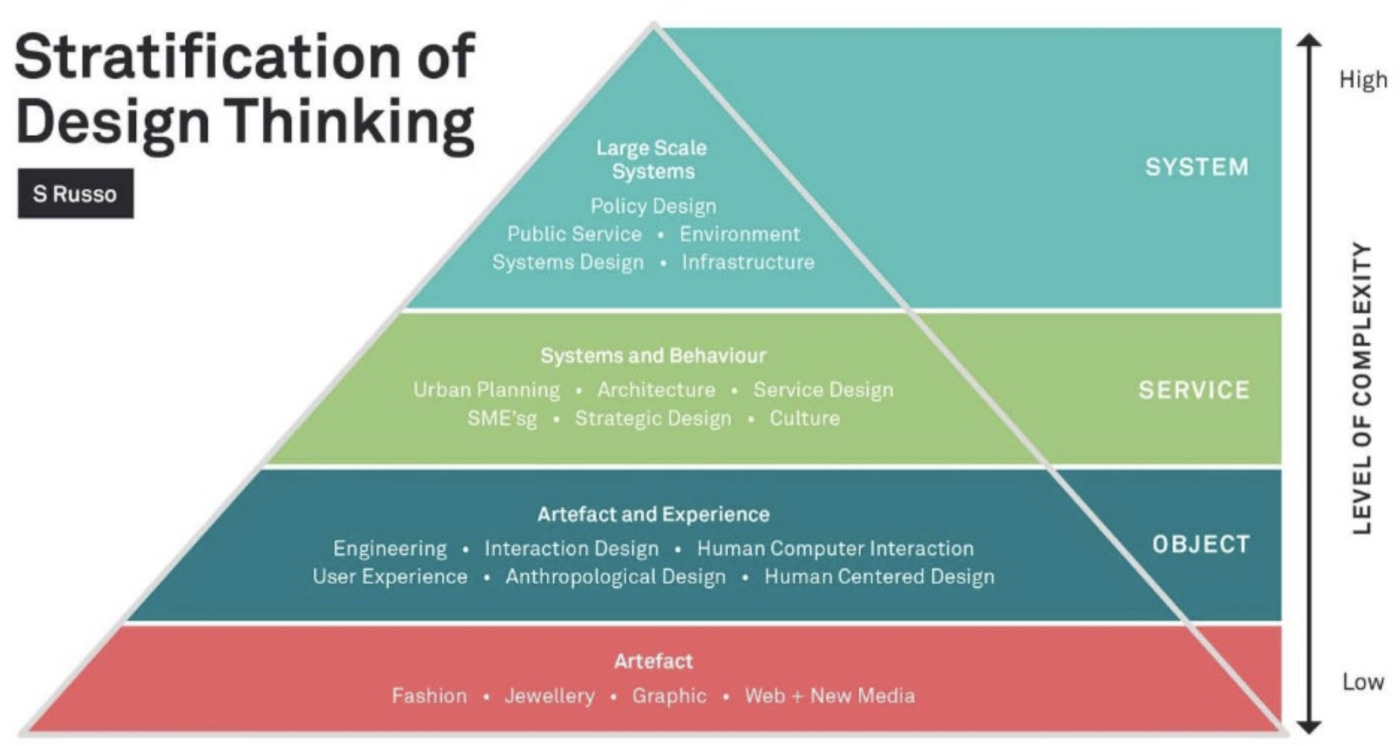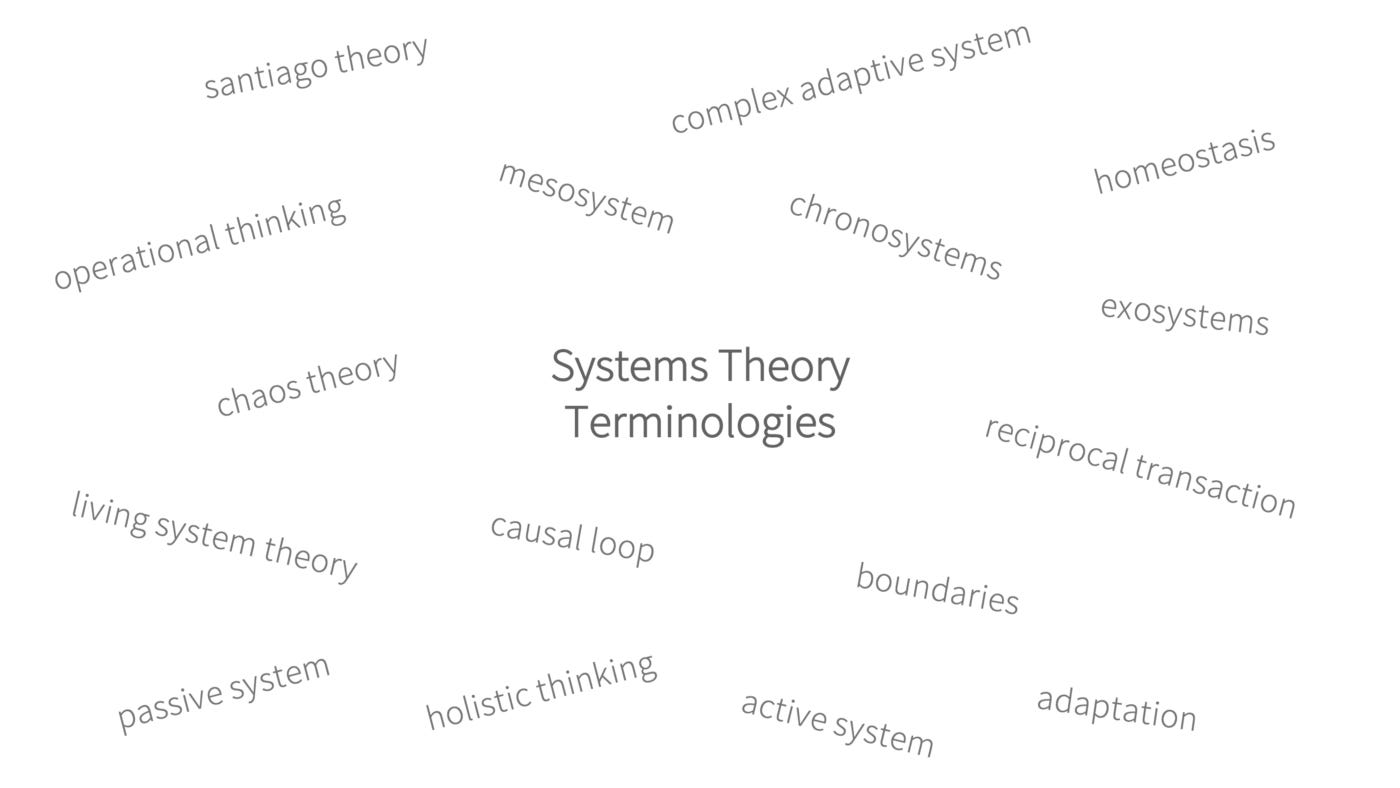Applying Systems Thinking in Product Design & Startup - Mindset Leading to 10x Growth!
Deep dive into your PM and Sr Designer's best-kept secret. Learn the mindset behind how to drive business growth consistently and systematically.
Okay… What’s this systems thinking stuff? And why should I care? 🤔
Five Takeaways at the bottom of the article if you want to save time!
As a design founder, 80% of my work revolves around analyzing and understanding systems and 20% is about actual execution. Regardless of the task (design, marketing, data analysis, fundraising, recruiting…), I always apply systems thinking to elevate my thinking in order to solve problems or learn something new quickly and execute.
Short Case Study:
How Node App transitioned from a sales-led to a product-led customer onboarding?
In the past, every new business user needed to book a call with a sales rep to sign up and set up their Node account. In March 2021, we released a freemium plan, and we decided to transition away from demo calls as it’d become expensive and unscalable.
As result, I created a system that allowed us to shift from demo calls to self-serve. The first step was to identify all the sub-systems in the sales-led user onboarding and envision how that’d translate in a world where demo calls don’t exist. The scope of that project went beyond traditional product design. It combined product education, email marketing, ads strategy, sign-up flow, customer vetting, billing, and more.
Results:
Our business user base grew 10x from March to August 2021 - from 30 to 422.
75% of the brands who sign-up for our app use the product at least once.
We re-introduced demo calls for 3 weeks to test the effectiveness of the self-serve approach. The self-serve approach was by far more effective.
Omg… How did you do this? I want to grow 10x too! 😱
Let’s take a step back, what is systems thinking?
Systems thinking is the skill to solve problems in complex systems. A complex system is an entity that is composed of various components that interact among each other to produce an outcome. A company is an example of a complex system. Think of a company as a collection of subsystems that interact to achieve an outcome. The subsystems are the teams (product, sales, HR…) and the outcome is business results.
In order to develop the skill of systems thinking, you need to understand the basic theories and fundamentals behind the concept of systems. The field of study that looks in depth at this concept is called: systems theory. Learning the notions underlining systems helps in applying the skill of systems thinking to any situation.
That’s so abstract... How did you apply this? 😩
When applying systems thinking to shift Node App from sales to product-led, the first step was to zoom out and look at the company as a set of interrelated parts. By analyzing the relationship among sales, marketing, user flow, and engineering constraints, I rethought our first-time user experience and redesigned it. After mapping the new system, I got feedback from the team and we implemented it.
During the analysis, it was important to understand the history, the role, the intended goal, and the outcomes of all the touchpoints in the sales-led flow. Then, I set goals on what the product-led flow would aim to achieve. From there, I designed a system that’d lead to the desired outcome and strategized its implementation. We then improved the new flow by continuously collecting and acting upon user feedback.
Interesting 🤔 … Where can I fit systems thinking in my design process as of tomorrow?
“Systems thinking expands the range of choices available for solving a problem by broadening our thinking and helping us articulate problems in new and different ways.”
According to Russo’s Stratification of Design Thinking, problems with a high level of complexity are attributed to tasks having abstract solutions with intangible artifacts. That’s because intangible artifacts are often related to problems in complex systems which have to do with system and service problems. System thinking is best suited for problems with a high level of complexity. (Learn how to map complexity)
Despite its wide range of applications, designers usually apply it to organizational design, service design, and UX Research. Relative web design, iteration is not as simple and they require a depth of thought and problem-solving at a meta-level.
Learn How To Map
Here are some principles and shortcuts to get you started! 🤩 🙌🏾
Embed feedback loops to collect data on the dynamic environment (Related Concept: Complex Adaptive System)
After the user onboarding is completed, users get redirected to a 2 question form they need to fill up. That allows us to get feedback right after the task is completed. We use this data to iterate and improve the onboarding experience.
Understand your edge cases and the likelihood for chaos (Related Concept: Chaos Theory)
Planning for edge cases can be hard because the cost of fixing some edge cases might outweigh its benefits and their repercussions might be minor. That’s why I prefer to address the quick-wins and use Hotjar and Google Analytics to observe and understand in real life where they tend to manifest.
The goal is always toward automation (Related Concept: Living Systems Theory)
I think of a digital product as a living entity with the economics of scale. When transitioning from sales-led to self-serve, we automated cold outreach, demo calls, and SMB sales. Task completion rate as a metric is limiting due to it doesn’t consider the bigger picture. For us, success was about organizational impact.“How much time am I saving to the sales and support teams due to this solution?”
Prioritization helps in allocating mental energy for specific tasks (Related Concept: Closed system)
Couple of years ago, I worked on a project with an insanely tight deadline. I had to design general purposed website templates and get the developer to code them. Therefore, I created a system that autogenerates harmonious colors when you input a Hex code. Hard-coding all the colors would have been time-consuming, so I created a simple equation using theories of color model.
What are these theories and how can I apply them to my work? 🥱
I could write entire books on many of these concepts. In this part of the blog, I will focus on providing understandable definitions and how I applied some of them in the past.
Concept #1: Homeostasis
Definition: Homeostasis is the tendency of a system to resist change and maintain the status quo when it reaches a specific stage. When the system is in operation, if it’s functional and achieves its core purpose, it will reach a stage where it self-regulates according to the dynamic environment. Making extreme system-level changes lead to disruption, and ultimately a rejection of the change.
Application: For instance, we ran into some issues with the new onboarding system and we experimented with system-level changes on two occasions. The 1st was to reintroduce demo calls and the 2nd was to change the order of the onboarding.
Outcome: They both failed.
Reintroducing demo calls massively increased the workload of our team. It led to a rise in the drop-off rate and didn’t affect retention. Changing the order of the steps in the onboarding led to an increase in the CAC and hurt the performance of our ads.
Solving these issues came down to developing a deep understanding of the problem. From there, we could identify solutions that’d lead to logical improvements.
Concept #2: Complex Adaptive System (CAS)
Definition: Let’s start by understanding what’s a “Complex System” (CS). CS is a system having behaviors that generate results that are hard to predict because of the relationship among its subsystems and how it interacts with its external environment. These systems are complex because the interaction of their parts leads to the development of properties, such as nonlinearity, adaption, and feedback loop.
The fact that a CS is adaptive means that the collection of behaviors originating from its subsystems mutates which leads to unpredictable behaviors. Hence, understanding the individual parts doesn’t lead to an understanding of the system because the outcomes are based on new patterns of behaviors. These behaviors originate from CAS’s ability to learn, self-organize, and adapt according to its environment over time.
How do you even apply this? So abstract… 😩
Let’s unpack that definition. When applying the concept of CAS, I approach it from 2 lenses: (1) system creation and (2) system analysis.
**Only diving into system creation for this post**
When it comes to system creation, there is one core principle to understand CAS. A system becomes CAS over time based on its ability to adapt to a dynamic environment. When creating a system, I aim to conceptualize it in its simpler version because it’s easier to strategize its implementation and share it with teammates. When simplifying, I embed mechanisms to collect feedback from its interactions with the dynamic environment and act upon the feedback to build a CAS over time.
Application: For instance, when I worked on the system to shift from a sales-led to a self-serve onboarding, I designed the entire system based on previous learnings. When sharing the concept, I communicated the vision which helps articulate how it will evolve over time. From there, I provided a definition of what it meant for Version 1 to be fully implemented. Then, I showed how it will evolve to a V2 based on the feedback loops.
Outcome:
Decrease of the CAC! Version 1 achieved its goals which allowed us to layer our customer acquisition strategy on top of that infrastructure.
Improvement in UX. The embedded feedback loops helped us be proactive and iterate faster. Before, we were getting feedback mainly from email complaints.
Team Efficiency. Despite growing 10x, we didn’t increase headcount. This system led us to automate many tasks that were previously performed manually.
Concept #3: Living System Theory (LST)
Definition: LST is the general theory about the concept of a living system (LS). It states that a living system is a self-organizing entity that having life-like characteristics and properties which allow it to interact with its environment. Regardless of its complexity, a living system relies on its subsystems to survive and reproduce in order to expand itself.
Application: The purpose of adopting a system thinking approach is to reach a point where your company becomes a living system. For instance, Node App being an LS would mean that the product self-organizes and adapt to its environment autonomously.
Outcome: Currently, I’d characterize Node App as a simple system that’s gaining complexity due to its onboarding and customer acquisition system. My short-term goal is to further optimize these systems. From there, the plan is to use that approach to optimize for retention and monetization.
In the medium-term, my goal is to build a LS that grows exponentially when given capital which would lead to reproduction. In this context, reproduction means the creation of new markets originating from the product.
Wow… That was a lot of information… What are the main takeaways? 😮
Here are 5 key takeaways and tips
Complexity is not the goal. It is the outcome of a system adapting to its environment. Systems thinking provides methods to understand complexity.
Before making system-level experiments, you measure effectiveness accordingly and that there’s a way to quickly revert back to the status quo
You are not always going to succeed. Despite the positive results, this attempt to become product-led was my 2nd try. I tried 1.5 years ago and failed the hard way. At the time, I failed to consider key parts of the onboarding experience.
No system is perfect. You need to be very aggressive when it comes to collect feedback from the dynamic environment. From there, it’s all about priorizing them, rejecting some, and acting upon those that will improve the system.
When conceptualizing a system, sharing your designs with other stakeholders helps in validating assumptions and considering previously neglected variables. Sometimes, it leads to better scoping which helps in setting ambitious goals.
Congrats for making it this far in the blog post! 🙌🏾
Systems thinking is a very abstract topic that I have been obsessed with for years. It’s always a pleasure to share more about how I use it to elevate my thinking and how I apply it when it comes to startups!







